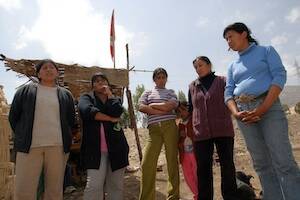With five years to go until the endpoint of the Millennium Development Goals in 2015—objectives set in 2000 to reduce poverty and improve the quality of life of the world’s poorest people—many countries are falling short. Peru’s maternal mortality rate—240 mothers die per 100,000 live births—has dropped by half in rural areas but is still far higher than those of other Latin American countries, which highlighs a problem the overall statistics conceal. Even if countries hit their M.D.G. targets, poverty rates remain high among indigenous people, women, children and rural residents. The urban-rural gap also holds true for primary education and access to water and sanitation. Some millennium goals also show a gender gap. In Latin America, although girls outnumber boys in high school and post-secondary education, women hold only one-third of top-level jobs. In places like Panama, Venezuela, urban Brazil and Mexico, more than half of all women in nonfarm jobs work in the informal economy, with no benefits or security. The figure rises to more than 70 percent in cities in Peru and Ecuador.
Gender Gap for Development Goals
Show Comments (
)
Comments are automatically closed two weeks after an article's initial publication. See our comments policy for more.
The latest from america
The conclave that begins next Wednesday to elect a successor for Pope Francis is the first in 46 ½ years for which the Vatican hasn’t ordered a set of cassocks from the two best-known papal tailors.
Papabile: How do conclave watchers come up with their lists of the next pope—and should we trust them?
The people of God see the bishop of Rome as a teacher, but they also unquestionably see him as a father.
Since the death of Pope Francis, lists of his possible successors have proliferated on social media and in newspapers. Should you trust them?








